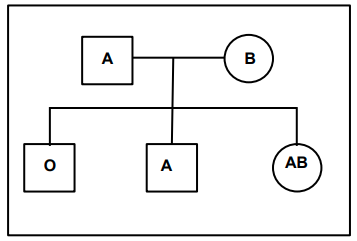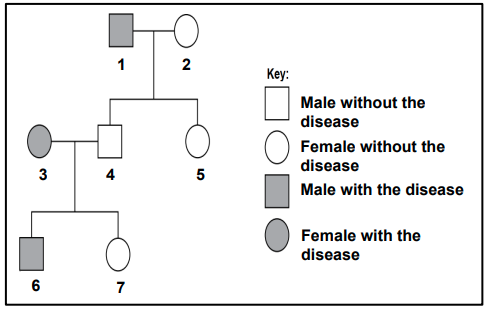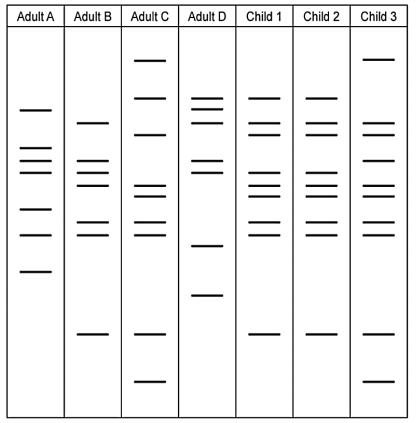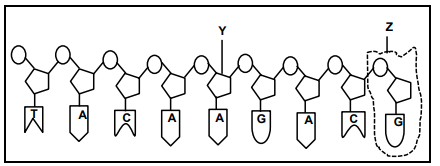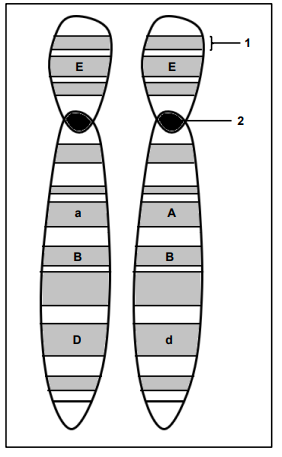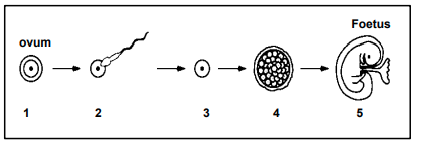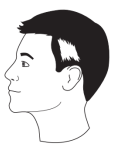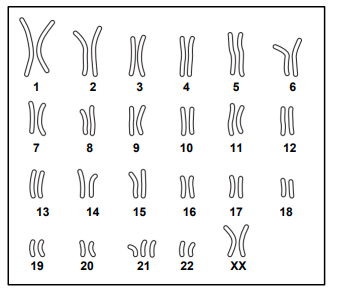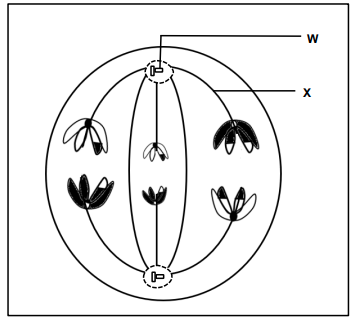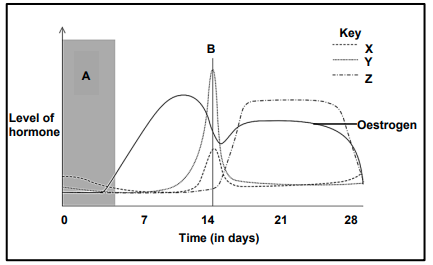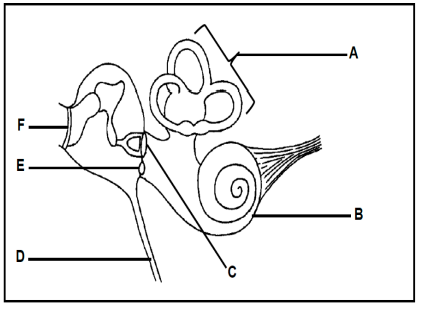LIFE SCIENCES GRADE 12 QUESTIONS - NSC PAST PAPERS AND MEMOS JUNE 2022
Share via Whatsapp Join our WhatsApp Group Join our Telegram GroupNATIONAL
SENIOR CERTIFICATE
GRADE 12
JUNE 2022
LIFE SCIENCES
INSTRUCTIONS AND INFORMATION
Read the following instructions carefully before answering the questions.
- Answer ALL the questions.
- Write ALL the answers in your ANSWER BOOK.
- Start the answer to EACH question at the top of a NEW page.
- Number the answers correctly according to the numbering system used in this question paper.
- Present your answers according to the instructions of each question.
- Do ALL drawings in pencil and label them in blue or black ink.
- Draw diagrams, tables or flow charts only when asked to do so.
- The diagrams in this question paper are NOT necessarily drawn to scale.
- Do NOT use graph paper.
- You may use a non-programmable calculator, protractor and a compass where necessary.
- Write neatly and legibly.
SECTION A
QUESTION 1
1.1 Various options are given as possible answers to the following questions. Choose the answer and write only the letter (A–D) next to the question numbers (1.1.1 to 1.1.10) in the ANSWER BOOK, for example 1.1.11 D.
1.1.1 The central nervous system is made up of the …
- autonomic and peripheral nervous systems.
- cranial and spinal nerves.
- sympathetic and parasympathetic nerves.
- brain and spinal cord.
1.1.2 Which ONE of the following involves the development of the young inside the uterus of the mother and where it receives nutrients
through the placenta?
- Ovipary
- Vivipary
- Ovovivipary
- Amniotic egg
1.1.3 Where are sperm cells in humans temporarily stored?
- Epididymis
- Vas deferens
- Urinary bladder
- Prostate gland
1.1.4 A patient experiences slight visual and speech disturbance after a serious head injury. Which section of the brain has possibly been
damaged?
- Cerebrum
- Cerebellum
- Hypothalamus
- Medulla oblongata
1.1.5 Contraceptive pills which prevent pregnancy are likely to contain high levels of …
- LH and oestrogen.
- only FSH.
- only progesterone.
- FSH and progesterone.
1.1.6 The diagram shows the blood groups of individuals in a family.
Which statement about the genotypes of the parents is correct?
- Both parents have alleles for blood group A and B.
- Both parents have the allele for blood group O.
- Only the father has the allele for blood group O.
- Only the mother has the allele for blood group O.
1.1.7 Which ONE of the following is an effect of the sympathetic nervous system?
- Increased heart rate
- Constricted pupils
- Decreased blood pressure
- Contraction of the bladder wall
1.1.8 The table below shows the percentages of bases in DNA samples from various organisms.
| Source of DNA | Adenine | Cytosine | Guanine | Thymine |
| Human liver | 30 | 20 | 20 | Z |
| Chicken liver | W | 40 | 40 | 10 |
| Dog liver | 24 | 26 | 24 | 26 |
| Mouse bone marrow | 23 | X | 26 | 25 |
| Sunflower leaf | 10 | .39 | Y | 12 |
Which ROW of the table below correctly reflects the missing data values?
| W | X | Y | Z | |
| A | 9 | 24 | .38 | 30 |
| B | 10 | 26 | 39 | 31 |
| C | 10 | 26 | 39 | 30 |
| D | 10 | 25 | 38 | 29 |
1.1.9 The diagram shows a family in which some members suffer from a disease caused by a recessive allele.
Identify TWO family members who must be heterozygous for the gene.
- 5 and 7
- 3 and 6
- 2 and 3
- 1 and 4
1.1.10 An investigation was carried out to determine the fertility levels of healthy males in different age groups.
The procedure followed was as follows:
- 50 healthy males in each of the following age groups were asked to participate: 20–29, 30–39, 40–49, 50–59 and 60–69.
- Semen was collected from each of the males.
- The number of active sperm cells present in the semen was counted for each man in each age group and averages were
calculated.
Which ONE of the following is the dependent variable in the investigation?
- Fitness levels of the males
- Age groups of the males
- Number of active sperm cells
- Amount of semen (10 x 2) (20)
1.2 Give the correct biological term for each of the following descriptions. Write only the term next to the question number (1.2.1–1.2.8) in the ANSWER BOOK.
1.2.1 The type of fertilisation where the eggs are fertilised inside the body of the animal
1.2.2 A blood vessel in the umbilical cord that transports nutrients to the foetus
1.2.3 Organelle outside the nucleus of animal cells that contain DNA
1.2.4 The part of the ear that directs sound waves into the external auditory canal
1.2.5 The structure in the head of a sperm containing digestive enzymes
1.2.6 The stage when secondary sexual characteristics develop in males and females
1.2.7 The network of genetic material found in the nucleus during interphase
1.2.8 The type of egg produced by reptiles that has extra-embryonic membranes (8 x 1) (8)
1.3 Indicate whether each of the descriptions in COLUMN I applies to A ONLY, B ONLY, BOTH A AND B or NONE of the items in COLUMN II. Write A only, B only, both A and B or none next to the question numbers (1.3.1 to 1.3.3) in the ANSWER BOOK.
| COLUMN I | COLUMN II |
| 1.3.1 Discovered the structure of the DNA molecule | A: Watson and Crick B: White and Dart |
| 1.3.2 Reproductive strategy in birds where hatchlings are helpless and unable to move and feed themselves | A: Precocial B: Altricial |
| 1.3.3 Type of inheritance where both alleles are expressed equally in the phenotype | A: Incomplete dominance B: Complete dominance |
(3 x 2) (6)
1.4 The diagram below represents the results of a paternity investigation. It was determined that the three children were siblings (brothers or sisters) and share the same biological mother. Their mother is Adult B.
1.4.1 Name the technique used to obtain the results shown above. (1)
1.4.2 Which ONE of the adults is the children’s father? (1)
1.4.3 Give a reason for your answer to QUESTION 1.4.2. (2)
1.4.4 Which of the children are identical twins? (2)
1.4.5 State TWO other uses of the technique mentioned in QUESTION 1.4.1. (2)
1.5 In rabbits, fluffy tails (F) are dominant to unfluffy tails (f). Brown fur (B) is dominant to white fur (b). Two rabbits who are heterozygous for both traits are crossed.
The Punnet diagram below shows the possible gametes produced by each parent.
| FB | Fb | fB | fb | |
| FB | FFBB | X | FfBB | FfBb |
| Fb | FFBb | FFbb | FfBb | Ffbb |
| fB | FfBB | FfBb | ffBB | Y |
| fb | FfBb | Ffbb | ffBb | ffbb |
1.5.1
- State the type of cross represented above. (1)
- Give a reason for your answer to QUESTION 1.5.1(a). (1)
1.5.2 How many offspring have unfluffy tails and white fur? (1)
1.5.3 Give the genotype of the parent rabbits who were crossed. (1)
1.5.4 Identify the:
- Phenotype of offspring X (1)
- Genotype of offspring Y (1)
1.5.5 Give the proportion of offspring that could have fluffy tails. (2)
TOTAL SECTION A: 50
SECTION B
QUESTION 2
2.1 The diagram below represents one strand of a DNA molecule.
2.1.1 Identify:
- Sugar Y (1)
- Molecule Z (1)
2.1.2 Describe the process by which DNA makes a copy of itself. (6)
2.1.3 The table below shows the mRNA codons and the amino acids they code for:
| mRNA codon | Amino Acid |
| AAG | Lys |
| AGU | Ser |
| AUG | Met |
| UAC | Tyr |
| UCA | Ser |
| UGC | Cys |
| UUC | Phe |
Use the table above to write down the correct sequence of amino acids coded for from left to right, by the DNA strand shown above. (3)
2.1.4 During DNA replication, a mutation occurred in the first DNA triplet from the DNA molecule given above, changing from TAC to TTC.
Describe the effect of this mutation on the protein formed. (4)
2.2 The diagram shows a pair of homologous chromosomes.
2.2.1 Identify:
- Position 1 (1)
- Structure 2 (1)
2.2.2 State whether an individual with these chromosomes is homozygous or heterozygous with regards to the gene represented as A. (1)
2.2.3 Give a reason for your answer in QUESTION 2.2.2. (1)
2.2.4 Explain why these homologous chromosomes are similar but not identical. (3)
2.3 The diagram shows some of the stages in human reproduction, from ovum (egg) to foetus.
2.3.1 Identify reproductive structure at:
- 3 (1)
- 4 (1)
2.3.2 Name the process that is taking place at stage 2. (1)
2.3.3 Where in the body does the process at stage 2 occur? (1)
2.3.4 Describe the process responsible for the formation of the reproductive cell shown at stage 1. (6)
2.3.5 Describe TWO ways in which the foetus is protected. (2)
2.4 Piebaldism is a genetic condition which is characterised by a person having a white patch of hair. Piebaldism is controlled by a single dominant allele (H).
The diagram below shows a person with Piebaldism.
A man with a white patch of hair and a woman with a white patch of hair have two children:
- The first child was born without a white patch of hair.
- The second child was born with a white patch of hair
Use a genetic cross to show the possibility of producing the phenotypes of the children as described above. (6)
2.5 The diagram shows the chromosomes in one human cell.
2.5.1 Name the type of diagram shown above. (1)
2.5.2 Identify the chromosomes labelled 1–22. (1)
2.5.3 State whether the individual shown is a male or a female. (1)
2.5.4 Give a reason for your answer to QUESTION 2.5.3. (2)
2.5.5 Describe how this human cell ended up with the number of chromosomes shown at position 21. (5)
[50]
QUESTION 3
3.1 The diagram below represents a phase during meiosis.
3.1.1 Identify structures labelled:
- W (1)
- X (1)
3.1.2 Identify the phase shown. (1)
3.1.3 Give a reason for your answer in QUESTION 3.1.2. (1)
3.1.4 State the number of chromosomes that each daughter cell will contain at the end of meiosis. (1)
3.1.5 Give evidence from the diagram which indicates that the resulting daughter cells will be genetically different. (1)
3.1.6 Explain the significance of the daughter cells being genetically different. (2)
3.2 The graph below shows the changes in the levels of hormones in the menstrual cycle of a female.
3.2.1 Identify events in the menstrual cycle labelled:
- A (1)
- B (1)
3.2.2 Name the hormone:
- X (1)
- Z (1)
3.2.3 State the function of hormone X. (1)
3.2.4 Explain, the effect of the decrease in the level of hormone Z to the level shown in the graph above. (5)
3.3 The diagram below shows part of the human ear.
3.3.1 Give the LETTER and NAME of the part that:
- Equalises pressure between the outer ear and the middle ear (2)
- Absorbs excess pressure waves in the inner ear (2)
3.3.2 Give a function of the part labelled F. (1)
3.3.3 Explain the significance of the arrangement of the structures labelled A. (3)
3.4 Describe the path of an impulse in a reflex arc during a reflex action. (7)
3.5 Scientists investigated the effect of age on focusing distance of the eye.
The method they used is described below:
- Volunteers of different ages had their eyes tested
- Three individuals from each selected age were used
- Each volunteer was asked to read from a book
- The book was moved closer to their eyes
- When the words became out of focus, the distance was recorded
The results of the investigation are shown in the table below:Distance (mm) Average distance (mm) Age of volunteers Individual 1 Individual 2 Individual 3 40 256 261 257 258 45 282 275 280 279 50 292 301 297 X 55 311 309 307 309
3.5.1 Calculate the average distance for the volunteers aged 50 indicated as X in the table. (3)
3.5.2 (
- Name the process by which the eye is able to bring about a clear image when the book is moved closer to the eyes of the
individuals. (1) - Describe the process mentioned in QUESTION 3.5.2(a). (5)
3.5.3 Use the data from the table to plot a bar graph showing the average focusing distance of volunteers aged 40, 45 and 55. (6)
3.5.4 State the conclusion of this investigation. (2)
[50]
TOTAL SECTION B: 100
GRAND TOTAL: 150
